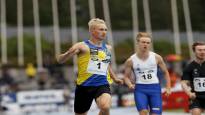Primus inter pares, the best among your peers.
It summarizes the spirit of the Kaleva Games game in a nutshell. In the championships, the fight is primarily for the Finnish championship, and everything else is subordinate to it.
In recent days, this seems to have been forgotten moment by moment not only by the athletes but also by the organizers.
100 meter Finnish record holder Samuli Samuelsson said on Friday For Iltalehti that he hoped that the championship of the hundred would be decided on the back straight in the hope of better wind conditions.
Also a long jumper Kristian Pulli more favorable jumping conditions.
– I came to this race with a good mood, as my condition has been on the rise. The race organizers could take a look in the mirror, since you could easily change the direction of the jump here. The headwind is quite a poison for us light jumpers, Pulli said after the final, according to STT.
In the case of Samuelsson and Pulli, Kaleva’s high ranking points at the Games weighed in the balance, which, combined with the points obtained from the result, would improve the duo’s chances of reaching the World Championships in Budapest.
On Friday and Saturday, the weather at Lahti Stadium was chilly, where the wind direction changed constantly. The decision on the jumping and running direction must be made one and a half hours before the start of the race.
At this point it is appropriate to stop and take a breath.
Does not belong to value competitions
The Kaleva Games are the main event of the domestic athletics season, the prestigious competitions.
Even though the 100-year-old WC final has occasionally been run on the back straight, on Friday there should have been no question that the audience who bought their tickets to the main stand of the Lahti stadium would have had to witness the decision of the title of the fastest man in Finland by trickling to the other side of the stadium.
It would simply not have been suitable for the value of the Finnish championship.
Athletes can claim their place in the prestigious competition by achieving a result limit set separately for their sport. After these qualifying individuals, the competition places remaining will be filled based on ranking positions.
The ranking is determined, for example, in the men’s 100 and length, based on the point average of the five best races.
With the upcoming World Championships in mind, the athletes have been able to set performance limits and collect points from all competitions in the last 12 months.
In the points pot of each race, the value of the race is of great importance. For example, Samuelsson received a total of 1235 points for the Finnish record he ran at the Kuortane Games. The point pot was structured so that SE result 10.12 brought 1165 points and the third place of the competition an extra 70 points.
Along with the Kaleva Games, the Kuortane Games are included in the so-called Competition Calendar of the International Association of Athletics Federations. to category B. In that, the winner of the competition gets one hundred ranking points on top of his result.
In other words: if Samuelsson had won the SC gold in Lahti on Friday evening by bypassing his SE time, he would have received a total of 1265 points.
Even if the score in question were added to Samuelsson’s ranking and the weakest race was dropped, his five-race average would still not be enough for direct entry through the World Championship ranking. In addition, it should naturally be taken into account that competitors have also been able to improve their average in recent days.
No cancellation wave expected
Last year, several European athletes who were entitled to a World Cup ticket because of their ranking did not use their competition place because they wanted to invest in the European Championship organized a few weeks later.
This year, a similar wave is not expected, because the World Championships in Budapest are the only prestigious competition for adults that brings together the best of the sports in the outdoor track season.
In the case of Pulli, the level has fluctuated so much during the year that his five-race average would not have risen even close to the average required for a place in the World Championships, even if he had won the WC gold with a score of 824.
Instead, a better result by a cent would have been the WC limit and ensured Pulli a direct place in the competition.
In the end, Pulli jumped the result of 773, which brought the SM gold in Lahti, against the wind, which was blowing 0.9 meters per second. However, he was also able to jump twice in the finals to a mere 0.3.
Samuelsson, on the other hand, ran his silver time of 10.45 in the final, where the anemometer read 0.8 meters per second.
Even if the performance of both had been favored by an ideal tailwind, it would have been extremely unlikely to achieve the result required for a place in the World Cup in the heat of Lahti.
That’s why the fact that 12 months of work ended with the openings for the World Cup in Budapest was a pointless play on both sides.
Game clear in the future
However, Pulli and Samuelsson are not to blame for the fact that there was a discussion about the topic at all at the Lahti stadium.
At Thursday’s media conference, Samuelsson had been told that the running direction would be changed depending on the wind conditions. When the SC medals are fought for next year in Vaasa, the local organizers should leave the corresponding speeches unused.
By acting like this, the essence of the Kaleva Games cannot be forgotten, the most essential, i.e. the competition.
